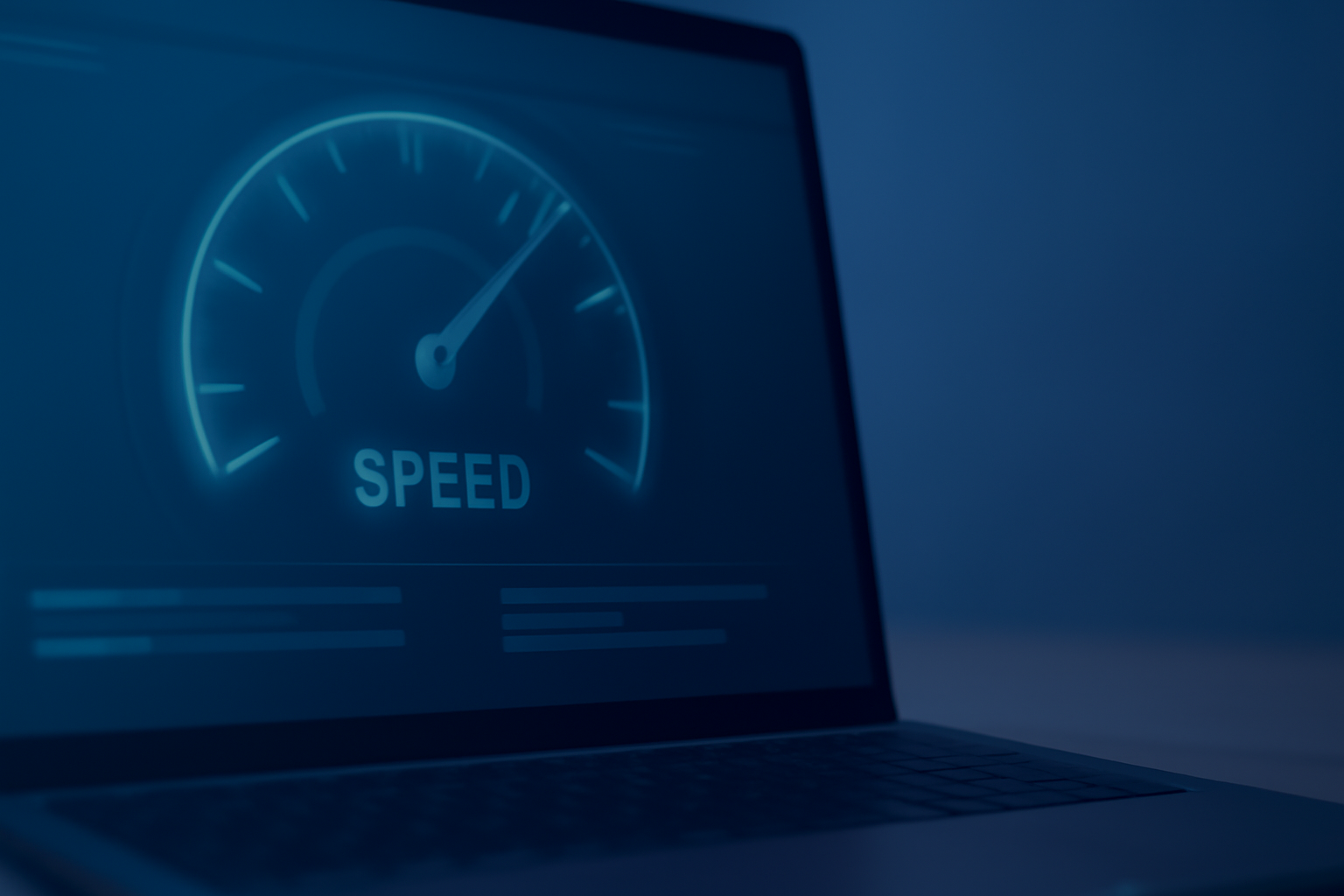Boost Website Speed Fast with These 7 Proven Steps
Boost Website Speed Fast with These 7 Proven Steps
In the fast-paced digital world, boosting your website speed fast is more important than ever. A slow-loading website can create a poor user experience, negatively impact your search engine rankings, and ultimately harm your business’s bottom line. In this article, we’ll explore 7 proven steps to help you boost website speed fast, making your site faster, more efficient, and user-friendly.
Whether you’re a blogger, a small business owner, or running an e-commerce site, improving your website’s speed can make a world of difference. In the following sections, we’ll dive into actionable steps that will help you speed up your site and keep visitors happy. Let’s get started!
Why Website Speed Matters for Your Business
Before we dive into the technical details, let’s take a step back and discuss why boosting your website speed fast matters so much. Websites that load quickly aren’t just a nice-to-have—they’re essential. In today’s world, your visitors expect a fast and seamless experience. Research has shown that 33% of users will abandon a site if it takes more than 3 seconds to load. Can you afford to lose potential customers over slow page load times?
Impact on User Experience
User experience (UX) plays a massive role in the success of your website. The faster your site loads, the better the overall experience for your visitors. When users encounter a sluggish website, they tend to bounce, increasing your bounce rate and affecting your search engine rankings. On the flip side, a fast website makes users feel welcomed and valued.
Effect on SEO Rankings
Search engines, especially Google, have a strong preference for fast-loading websites. Google uses page speed as a ranking factor, meaning boosting your website speed fast can directly influence your position on search engine results pages (SERPs). Sites that load faster rank higher, and higher rankings bring more organic traffic, which leads to greater visibility.
Step 1: Optimize Your Images for Faster Load Times
One of the most significant culprits behind slow website speeds is large image files. Images enhance user experience, but if they’re not optimized, they can be a major drag on your site’s performance. Boosting your website speed fast starts with reducing image sizes without compromising quality.
Choosing the Right File Format
Selecting the right file format for each image type can significantly reduce file size. For example, JPEG is ideal for photographs, while PNG works best for images with transparency or sharp edges. If you’re looking for even better compression without losing quality, try using WebP, a modern format supported by most browsers that offers excellent compression.
Tools for Image Compression
Several free and paid tools can help you compress images without sacrificing quality. TinyPNG and ImageOptim are both great options for reducing image size quickly. By using these tools, you can ensure that your images load faster, improving the overall user experience.
Step 2: Enable Caching for Faster Site Access
Caching is like having a shortcut to your website’s content. When a user visits your site, caching stores static content, so the user doesn’t have to reload everything each time they visit. Boosting your website speed fast with caching can significantly reduce load times and improve the overall performance of your website.
What Is Caching and How Does It Work?
Caching works by saving parts of your website (such as images, CSS files, and JavaScript) on a user’s device or server. The next time the user visits, these elements are quickly loaded from the cache, speeding up the page load process. The more content you cache, the faster your website will be.
Best Caching Plugins for WordPress
If you’re using WordPress, there are several caching plugins available. W3 Total Cache and WP Super Cache are two popular choices that can help you implement caching on your site quickly and easily. These plugins will not only help with speed but can also improve your site’s overall performance.
Step 3: Minify CSS, JavaScript, and HTML Files
When you visit a website, it loads all kinds of files—stylesheets (CSS), JavaScript files, and HTML files. Some of these files contain unnecessary characters like spaces, comments, and line breaks. Boosting your website speed fast involves minifying these files to reduce their size, making them load faster.
How Minification Reduces File Size
Minification removes those unnecessary characters and optimizes your code, reducing the size of your files. For example, by removing comments from JavaScript files or whitespace from CSS, you can reduce the size by up to 30% or more. This reduction means faster loading times and a more efficient website.
Tools for Code Minification
There are many tools available to help you minify your website’s code, such as UglifyJS (for JavaScript) and CSSNano (for CSS). Many of these tools have automated options that can minify your code with just a click, saving you time and improving your site’s performance.
Step 4: Leverage Content Delivery Networks (CDNs)
A Content Delivery Network (CDN) is a group of servers strategically placed around the world to deliver website content from the server closest to the user. By leveraging a CDN, you can boost your website speed fast, ensuring that your site loads quickly no matter where your visitors are located.
How CDNs Speed Up Content Delivery
When you use a CDN, your website’s content is cached on multiple servers worldwide. This means that when someone visits your website, the server nearest to them will deliver the content, reducing the time it takes for the page to load. This is especially important for international websites or those with a large global audience.
Choosing the Right CDN Provider
Some popular CDN providers include Cloudflare, Amazon CloudFront, and StackPath. These services are easy to integrate with most websites and can drastically improve your website’s speed. If you’re running a large website with high traffic, a CDN should be a key part of your speed optimization strategy.
Step 5: Reduce HTTP Requests
Each time a user visits your site, their browser makes an HTTP request to retrieve content such as images, CSS files, and JavaScript. The more requests a page has to make, the slower it will load. By reducing the number of HTTP requests, you can boost your website speed fast.
Why Fewer Requests Lead to Faster Loading
When a page makes too many requests, it takes longer to load. By combining CSS and JavaScript files or using image sprites (combining multiple images into one), you can reduce the number of HTTP requests your page needs to make. This will result in faster load times and a better user experience.
Techniques to Reduce Requests
You can reduce HTTP requests by combining multiple files, using CSS sprites for icons, and reducing the number of external resources like third-party widgets or plugins.
Step 6: Optimize Web Hosting and Server Performance
Even the fastest website optimizations won’t make a difference if your hosting provider or server is too slow. Boosting your website speed fast involves choosing a hosting provider that offers high-performance servers.
Choosing the Right Hosting Plan
If you’re using shared hosting, your website shares resources with other sites, which can slow things down. Consider upgrading to VPS hosting or dedicated hosting for better performance. These hosting plans provide more resources dedicated to your site, ensuring faster load times.
Importance of Server Response Time
The response time of your server is crucial to your website’s speed. A slow server response can add unnecessary delays, so choose a provider that offers fast servers and low latency. This will help reduce load times and ensure your site loads quickly for visitors.
Step 7: Regularly Test and Monitor Your Website Speed
ptimizing website speed is not a one-and-done task. Regularly testing and monitoring your site’s speed is essential to ensure it stays fast and efficient. Boosting your website speed fast means continually assessing and improving your site’s performance.
Using Tools for Speed Testing
There are several free and paid tools available to help you test your website’s speed. Google PageSpeed Insights, GTmetrix, and Pingdom are great tools that give you detailed insights into your website’s performance and provide actionable recommendations for improvement.
Analyzing and Acting on Speed Test Results
Once you’ve tested your site, take action based on the results. Implement the recommendations provided by the tools and retest to see if the changes have had a positive impact on your site’s speed. Regular testing ensures that your site remains fast and functional.
Conclusion: Boost Your Website Speed for Better Results
By following these 7 proven steps, you can boost your website speed fast, improving both user experience and SEO rankings. Optimizing images, enabling caching, minifying code, and leveraging CDNs are just a few of the ways to ensure your website runs smoothly. Regular testing and monitoring will help you maintain peak performance.
Recap of Key Steps: Optimize images, enable caching, minify files, use a CDN, reduce HTTP requests, optimize hosting, and regularly test.
Encouragement to Implement Changes Now: Don’t let your website slow you down. Start implementing these strategies today and watch your site’s performance soar!
5-15 Bullet-Point Summary:
- Website speed directly impacts user experience, SEO rankings, and business success.
- Slow load times can lead to higher bounce rates and lower conversion rates.
- Optimizing images by choosing the right file formats and compressing files is key to reducing load times.
- Enabling caching allows users to access previously-loaded content quickly, improving performance.
- Minifying CSS, JavaScript, and HTML files reduces file size, speeding up load times.
- Using a CDN (Content Delivery Network) ensures faster content delivery by distributing it to servers worldwide.
- Reducing HTTP requests by combining files and using image sprites can help speed up your site.
- Choosing the right hosting plan (VPS or dedicated hosting) improves server performance and reduces load times.
- Regular speed testing with tools like Google PageSpeed Insights and GTmetrix helps maintain optimal performance.
- Faster websites lead to better SEO rankings, increased organic traffic, and improved user engagement.
- By following these steps, you can boost website speed fast and improve overall site performance.
FAQs
Why does website speed matter?
Website speed impacts user experience and search engine rankings. A slow-loading site can cause visitors to leave quickly, resulting in higher bounce rates and lower conversions. It also affects your SEO, as search engines like Google prioritize fast websites.
What is caching, and how does it help speed up my website?
Caching stores parts of your website, such as images or files, so that visitors don’t need to load them again every time they visit. This reduces page load times and makes your site faster, improving user experience.
How can I optimize images without losing quality?
You can use tools like TinyPNG or ImageOptim to compress images. Choosing the right file format (JPEG for photos, PNG for graphics) and using newer formats like WebP can help reduce file sizes without sacrificing quality.
What is a CDN, and how does it speed up my site?
A Content Delivery Network (CDN) caches your website’s content on multiple servers worldwide, allowing users to load content from a server closest to them. This reduces load time and improves site performance.
Why should I minify CSS and JavaScript files?
Minifying CSS and JavaScript removes unnecessary characters, like spaces and comments, from the code. This reduces the file size, making it quicker for users to load your website.
How do I reduce HTTP requests on my site?
You can reduce HTTP requests by combining CSS and JavaScript files and using image sprites (combining multiple images into one). This cuts down on the number of files the browser needs to load.
What’s the best hosting option for fast website speeds?
For optimal performance, consider upgrading from shared hosting to VPS or dedicated hosting. These options provide more resources for your site, leading to faster load times.
How often should I test my website’s speed?
You should test your website speed regularly, especially after making any major changes or adding new content. Tools like Google PageSpeed Insights and GTmetrix can help monitor performance and suggest improvements.
Can a slow website affect my business?
Yes, a slow website can lead to lost customers, lower conversion rates, and decreased revenue. It can also negatively impact SEO, making it harder for users to find your site.
How does website speed affect SEO?
Google uses site speed as a ranking factor. Websites that load faster are more likely to rank higher in search results, bringing more organic traffic to your site.
Can I speed up my website without technical expertise?
Yes, many website speed improvements, like using caching plugins or optimizing images, can be done with minimal technical knowledge. However, some advanced optimizations may require professional help.
What’s the role of server response time in website speed?
Server response time refers to how quickly your server responds to requests from visitors’ browsers. A slow server can delay loading times, so choosing a reliable hosting provider is essential for good speed.
How does mobile optimization affect website speed?
Mobile optimization ensures that your site is designed to load quickly and function properly on mobile devices. Since mobile traffic is increasing, it’s crucial for your website to be fast and responsive on phones and tablets.
What is GZIP compression, and how does it help?
GZIP compression reduces the size of files sent from the server to the user’s browser, speeding up load times. It’s an easy optimization that can have a significant impact on performance.
Can a website speed test help improve my site?
Yes, website speed tests help identify bottlenecks and areas that need improvement. Once you know what’s slowing your site down, you can take targeted actions to boost performance.
Explore These Valuable Resources
To enhance your understanding of website speed optimization, we’ve curated a list of valuable resources that will help you dive deeper into the subject. These links will not only provide actionable insights but also help you stay ahead of industry trends. Let’s explore:
Google PageSpeed Insights
Access Google’s official speed testing tool to analyze your site’s performance and get detailed recommendations for improvement.
Google PageSpeed Insights
GTmetrix
GTmetrix provides in-depth analysis of your website’s speed, including suggestions on how to improve load times.
GTmetrix
Pingdom Website Speed Test
Pingdom is another popular tool for testing your website’s speed, offering insights into load time and bottlenecks.
Pingdom Website Speed Test
Web.dev by Google
This Google platform provides in-depth guides on optimizing website performance, from loading speeds to SEO.
Web.dev
Content Delivery Networks (CDNs)
Learn about CDNs, which distribute your site’s content globally to reduce load times. Explore Cloudflare for CDN services.
Cloudflare CDN
WP Rocket Blog
A great resource for WordPress users, WP Rocket offers tips on caching and other speed optimizations to boost performance.
WP Rocket Blog
Moz – SEO and Website Speed
Moz provides valuable insights on how website speed affects SEO and offers strategies for improving both.
Moz SEO and Website Speed
Image Optimization Best Practices
Check out this guide from Smush on optimizing images for faster load times without compromising quality.
Smush Image Optimization Guide
W3 Total Cache Plugin
If you’re using WordPress, this caching plugin is a must-have to speed up your site.
W3 Total Cache Plugin
WebP Image Format
Explore the benefits of the WebP image format for reducing file sizes without losing image quality.
WebP Official Website
Cloudways – Speed Optimization Tips
Cloudways offers a detailed blog on ways to optimize your website speed, covering caching, database optimization, and more.
Cloudways Speed Optimization Tips
SiteGround Hosting Performance
SiteGround offers optimized hosting services that focus on high performance and speed, ideal for growing websites.
SiteGround Hosting
SEO Expert John Mueller’s Tips on Page Speed
John Mueller from Google shares expert insights into how page speed affects SEO and provides practical advice.
John Mueller’s Tips on Page Speed
The Ultimate Guide to Website Caching
This article from Kinsta explains how caching works and why it’s crucial for improving site speed.
Kinsta Ultimate Caching Guide
Image Compression Tools – TinyPNG
TinyPNG is a reliable tool for compressing images while retaining high quality, helping improve website performance.
TinyPNG Image Compression
By exploring these resources, you can improve your website’s speed and optimize your online presence for better user engagement and SEO performance. Each of these tools and guides will provide you with the knowledge you need to stay ahead in today’s competitive digital landscape.
Blog Recommendation:
For more insights on web design and digital strategies, check out this excellent blog by Rizwan. It offers actionable tips and expert advice to elevate your website’s user experience.







